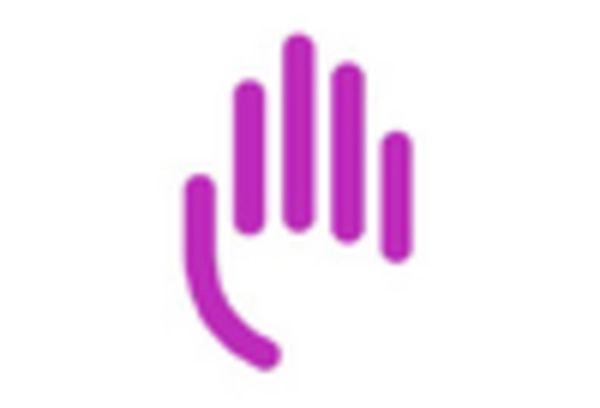Expansion of Telehealth Services
The expansion of telehealth services is transforming the labyrinthitis market by providing patients with greater access to healthcare professionals. Telemedicine platforms enable remote consultations, allowing individuals experiencing symptoms of labyrinthitis to receive timely advice and treatment recommendations without the need for in-person visits. This trend has gained traction, particularly in rural areas where access to specialists may be limited. The telehealth market is projected to grow by 25% annually, indicating a significant shift in how healthcare is delivered. As telehealth becomes more integrated into standard care practices, the labyrinthitis market is likely to see increased patient engagement and improved management of labyrinthitis.
Increased Healthcare Expenditure
Rising healthcare expenditure in the US is a crucial driver for the labyrinthitis market. With healthcare spending projected to reach $4.1 trillion by 2025, there is a growing focus on improving healthcare services and access to treatments for various conditions, including labyrinthitis. This increase in funding allows for better diagnostic facilities, treatment options, and patient education initiatives. As healthcare systems allocate more resources to address ear disorders, the labyrinthitis market stands to benefit from enhanced service delivery and increased patient engagement. Consequently, this trend may lead to a higher rate of diagnosis and treatment for labyrinthitis.
Growing Demand for Personalized Medicine
The trend towards personalized medicine is reshaping the labyrinthitis market. Tailored treatment plans based on individual patient profiles are becoming more prevalent, as healthcare providers recognize the need for customized approaches to manage labyrinthitis effectively. This shift is supported by advancements in genetic testing and biomarker identification, which allow for more precise treatment strategies. The personalized medicine market is expected to reach $2 trillion by 2025, indicating a substantial opportunity for the labyrinthitis market to align with this trend. As patients seek more effective and individualized care, the demand for personalized treatment options for labyrinthitis is likely to rise.
Increasing Incidence of Inner Ear Disorders
The labyrinthitis market is experiencing growth due to the rising incidence of inner ear disorders. Conditions such as vestibular neuritis and Meniere's disease contribute to the prevalence of labyrinthitis, leading to increased healthcare consultations. According to recent data, approximately 5 million individuals in the US are diagnosed with vestibular disorders annually, which may lead to labyrinthitis. This growing patient population drives demand for effective treatment options and diagnostic tools, thereby positively impacting the labyrinthitis market. As awareness of these conditions increases, healthcare providers are more likely to identify and treat labyrinthitis, further fueling market growth.
Technological Innovations in Diagnostic Tools
Technological advancements in diagnostic tools are significantly influencing the labyrinthitis market. Innovations such as high-resolution imaging techniques and advanced audiometric tests enhance the accuracy of labyrinthitis diagnoses. For instance, the introduction of digital otoscopes and vestibular testing equipment has improved the detection rates of labyrinthitis. The market for diagnostic devices is projected to grow at a CAGR of 7% over the next five years, reflecting the increasing investment in healthcare technology. As healthcare facilities adopt these advanced tools, the labyrinthitis market is likely to benefit from improved patient outcomes and increased treatment rates.

















Leave a Comment